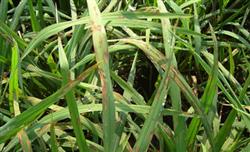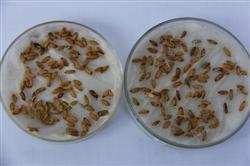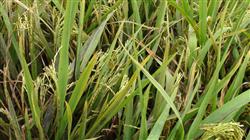Classification standard and control method of rice blast

Grading standard leaf blast: grade 1 sporadic occurrence, careful investigation showed that the disease was slightly more in grade 2, the disease was common in grade 3 in the lower part, the disease was more severe in grade 4 in the middle and lower part, and the disease was concentrated in the middle and upper part of the disease. There are a small amount of falling pond rice blast in grade 5 and serious disease, there are obvious falling pond panicle blast: grade 1 sporadic occurrence of white ear The whole field loss rate is less than 5% (excluding 5%), the whole field loss rate is 5%, 10%, 10%, 10%, 10%, 25%, 25%, 25%, 25%, 25%, 25%, 25%, 25%, 25%, 25%, 25%, 25%, 25%, 25%, 25%, 25%, 25%, 25%, 25%, 25%, 25%, 25%, 25%, 25%, 25%, 25%, 25%, 25%, 25%, 25%, 25%, 25%, 25%, 25%, 25%, 25%, 25%, 25%, 25%, 25%, 25%, 25%, 25%, 25%, 25%, 25%, 25%, 25%, 25%, 25%, 25%, 25%, 25%, 25%, 25 (1) selecting suitable local disease-resistant varieties according to local conditions. (2) leave seeds in disease-free fields, treat diseased rice straw and eliminate pathogens. (3) according to the law of fertilizer requirement of rice, the technology of formula fertilization was adopted to achieve the alternation of dry and wet in the later stage, so as to promote the ripening of rice leaves and enhance the disease resistance. (4) seed treatment: soak the seeds in 56 ℃ warm soup for 5 minutes. Soak the seeds with 1000 times of 10% 401 antibacterial agent or 2000 times of 80% 402 antibacterial agents and 1000 times of methyl thiophanate (methyl thiophanate) wettable powder for 2 days. Soak the seeds in 2% formalin for 20 minutes, then cover the seeds with film for 3 hours. (5) Pesticide control. Seize the critical period and use medicine at the right time. Catch the leaf blast and treat the ear blast ruthlessly. At the initial stage of the disease, 20% tricyclazole (chlorpromazole) wettable powder was sprayed with 1000 times or 1000 times with 40% rice disinfectant (Fuji 1) EC, 50% carbendazim or 50% thiophanate methyl wettable powder.
- Prev

Breeding techniques for blast resistance of rice
The main diseases transmitted by rice seeds are evil seedling disease, rice blast, rice false smut, bacterial leaf blight, stripe blight transmitted by gray planthopper at seedling stage and so on. At present, it is the time for rice seed soaking in Qilin District. When soaking rice seeds, demonstration households must insist on soaking rice seeds with chemicals. The main purpose is to kill the germs carried by rice seeds.
- Next

Occurrence and control of rice blast and rice planthopper
First, the occurrence of rice blast: Rice leaf blast has appeared in Helan, Qingtongxia and other places. The initial period is June 13, about 10 days earlier than last year. Especially after the rainfall on July 7 and 12, the humidity in the field is relatively high, which is very beneficial to the development of leaf blast. The average rate of disease fields in the recent general survey of Qingtongxia is 16.7%.
Related
- The first cup of black tea in spring, the flavor and history of tea gardens in Kenya, Africa
- The computer can not only choose potatoes, but also grow tea rice. AI will grow winter oolong tea champion.
- It is not only the inflated tea bitten by insects, but also engraved with the four seasons tea in Beipu.
- The Oriental Beauty Tea Festival in Zhuxian County takes the stage at the weekend to experience the plus-size feast of oil tea.
- & quot; Oriental Beauty Tea & Exploration of Emei in Hsinchu, the hometown of quot;
- The new variety of strawberry "Tainong 1" dessert is the first choice with mellow aroma. Crimson gorgeous
- History of Tea in Taiwan: from Wild Inner Mountain to Export Tea Garden
- Two types of Taiwan Oriental Beauty Black Tea won the British three-Star Award for Childhood Tea Xiang Zhang Jiaqi changed from pilot to champion tea maker.
- Banana species and varieties: the planting history of Taiwan Xianren banana and dwarf banana is long, is banana disease resistant?
- Coffee planting Technology: Qianjie Coffee from Seedling to harvesting

